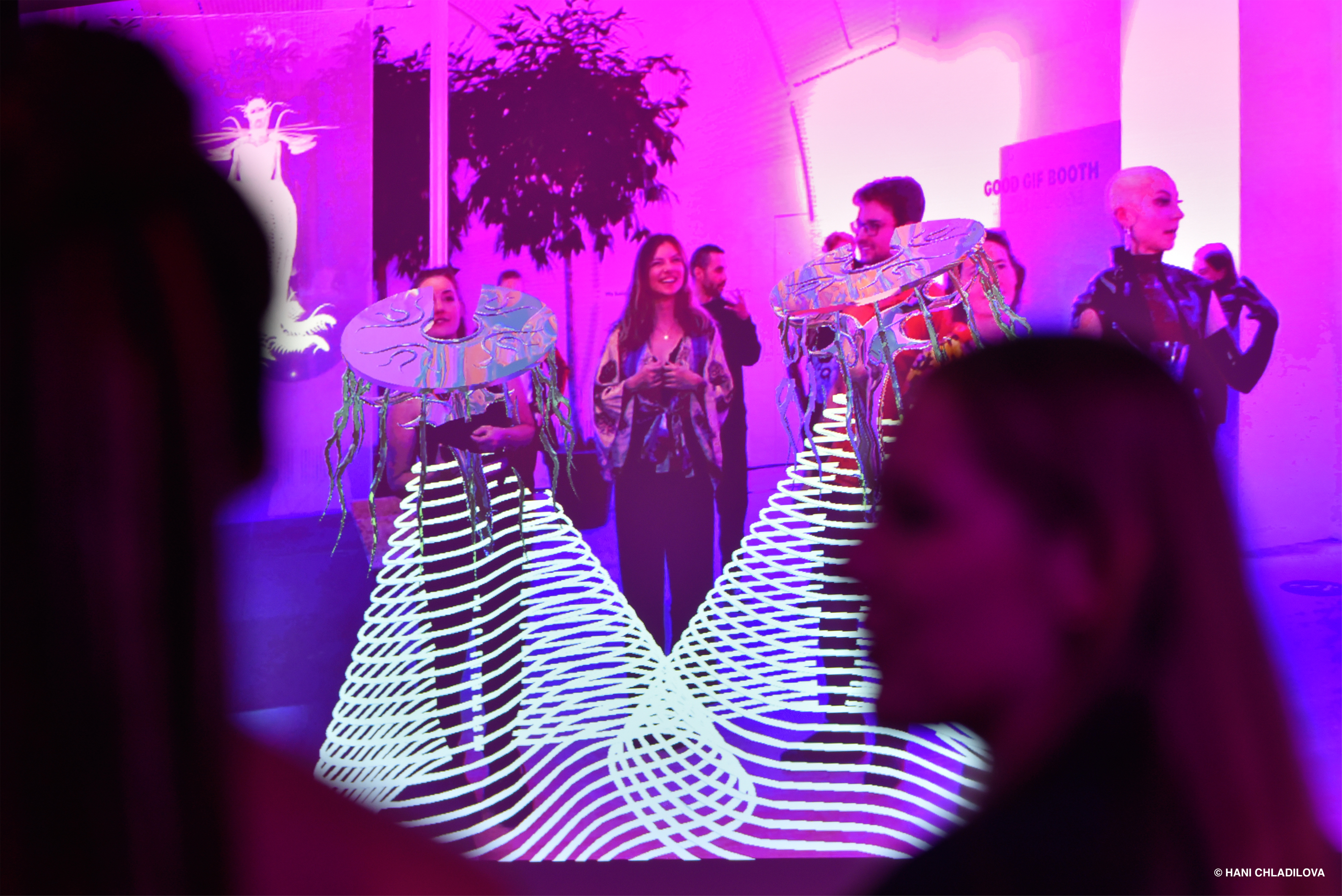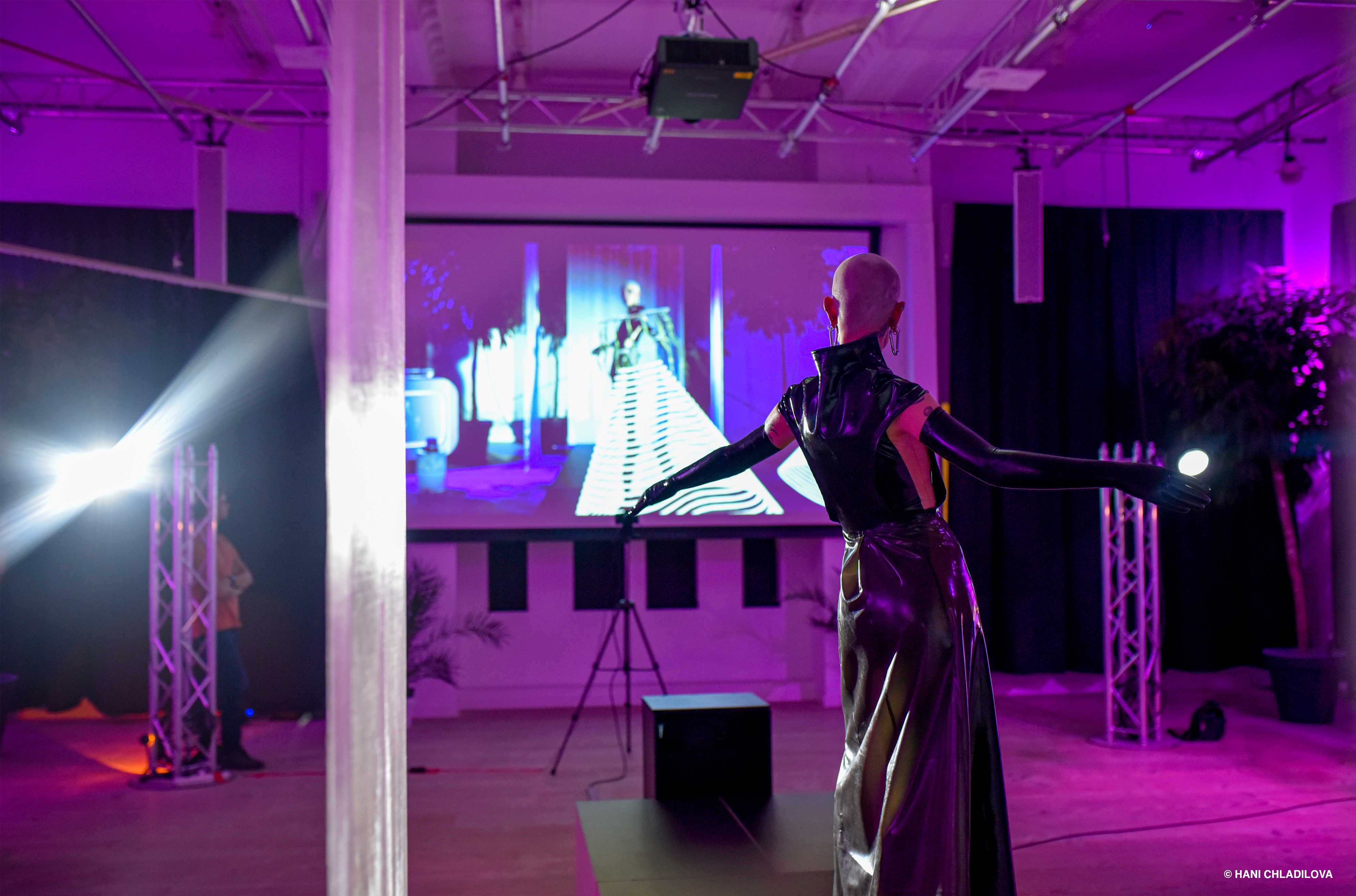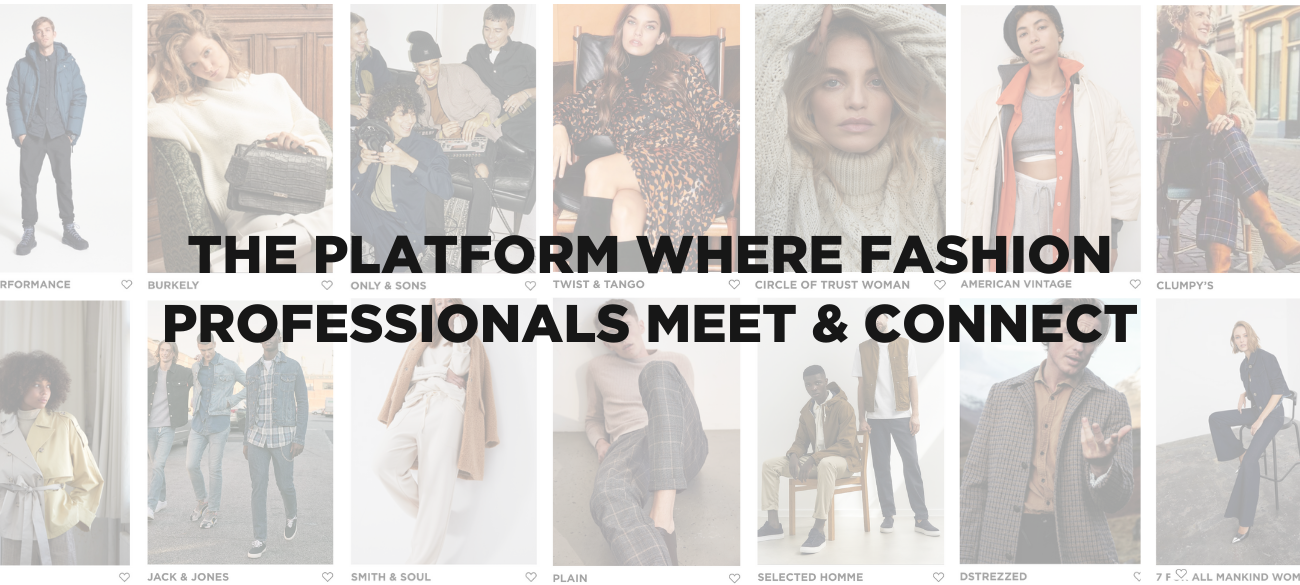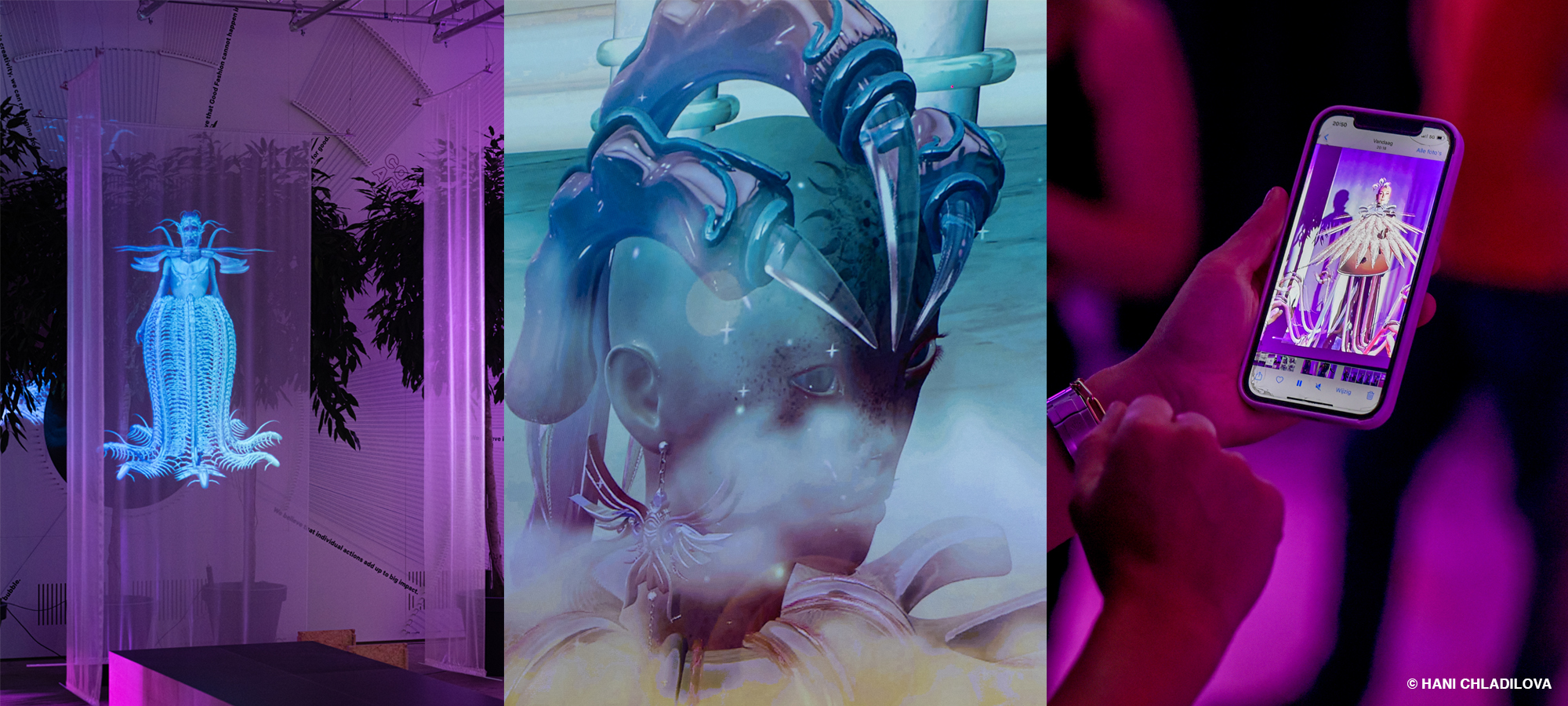Create a free retailer account now or view the other options.
Opening Dutch Sustainable Fashion Week – Meggie van Zwieten
Can digital fashion be the answer to the sustainability issue within the fashion industry? That was the question that was asked during the opening of the Dutch Sustainable Fashion Week. The opening took place on Thursday 23 September, with the digital fashion collection of Dutch designer and artist Meggie van Zwieten, in the fashion museum of sustainable innovation platform Fashion For Good.
Digital fashion as a sustainability tool
Since the corona crisis, fashion labels have been forced to look at their traditional collection presentations in a different way; digital has become the new norm. With her collection, Meggie van Zwieten proves that the physical and digital worlds can be united with each other – something that goes beyond presenting a digital show. She did so by using augmented and virtual reality techniques. "We are constantly adapting the physical environment to meet people's needs," reads the collection description. "It's time to leave nature alone and find our desires in digital landscapes."
Her clothing collection Yana shows that digital clothing can be a solution to reduce the negative environmental impact of the fashion industry. Van Zwieten tells Modefabriek: "With this collection I mainly want to show that digital fashion is a relevant way of sustainable dressing. The demand for new items is so high, that it causes overproduction and waste. Digital fashion can respond to this by its modular factor: with just one click, the consumer can adjust a garment."

Inclusivity and individuality
Before the show, the audience took a seat in a room with a catwalk in the middle – a setting that initially gave the impression that a traditional fashion show was going to take place. Nothing could be further from the truth, several screens turned on and a futuristic collection video was shown with avatar models presenting the avant-garde garments with sci-fi style via a digital catwalk. For each outfit, there are two different avatars on display, with different body types. In this way, inclusivity is guaranteed, something that Van Zwieten considers to be one of the most important focal points of her collection and digital fashion in general.
Van Zwieten: "For me, expressing identity in clothing is very important and I believe that digital fashion can contribute to strengthening this element, because of the interactive factor. Fashion in a digital environment offers the opportunity to discover new forms of clothing and a possibility to break free from certain associations such as gender, stereotypes or cultural history. Because digital avatars are often used, which can be unisex, modular or even inhumane, there is also less need to compare the model and the consumer."
As soon as the film ended, Van Zwieten took the stage. At first, she seemed to walk the catwalk as in a traditional fashion show, but it soon became clear that her digital design was projected onto her through the screen, that way it seemed that she only 'wore' her clothes in the digital world. Van Zwieten: "Digital fashion does not have to be worn physically. Because the material and form possibilities are endless and there is no need to take into account natural laws such as gravity, the dimensions go much further."

Digital future
After the show, the audience was invited to take a trip to her virtual world and experience her garments in augmented reality. Will digital fashion be the future? Yes, if it's up to Van Zwieten: "I think that people are realizing that digital fashion not only has to be a temporary solution, but also has an added value. You see that more and more established brands are experimenting with digital fashion and embracing its possibilities. With my collection, I want to introduce the possibilities of virtual fashion to a wider audience, but I also want to show that art, fashion and the individual can merge. I hope digital fashion can contribute to an experience, rather than materialism and overconsumption."
Written by Lara Oliveri
Share article

